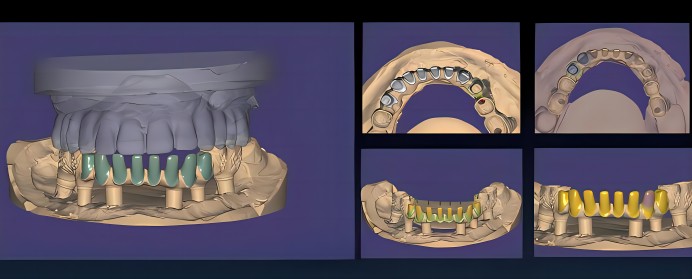
In the field of dental restoration, the dental CAD designer plays a crucial role. They not only need to be proficient in various processes of prosthetic dentistry but also excel in restoration design for dental implants, crowns and bridges, and removable partial dentures. As an expert with over 20 years of experience in the prosthodontics industry in the United States, I fully understand the uniqueness and importance of this position.
In the era of digital dental restoration, dental CAD designers must be proficient in a range of specialized software. These tools serve as their magic wands, transforming complex dental restoration designs into precise and efficient digital representations. Currently, some of the leading dental CAD software on the market includes exocad, 3Shape Dental System, DentalCAD, and NobelProcera, each with its unique strengths and features.
Furthermore, new dental CAD software is constantly emerging, often with more advanced technology and user-friendly designs, providing dental CAD designers with even more options and possibilities.
However, merely mastering the operational skills of these software tools is insufficient for dental CAD designers. They must also possess profound knowledge of oral anatomy and physiology, along with extensive clinical experience. Only by combining this knowledge and experience can they flexibly apply the software to design optimal restoration solutions based on the specific conditions and needs of patients.
As technology continues to evolve and be applied, dental CAD design software is also constantly being updated and upgraded. Therefore, as outstanding dental CAD designers, we must maintain sensitivity to new technologies and the ability to learn, keeping up with the latest functions and best practices of the software to address increasingly complex dental restoration needs.

The role of dental CAD designers is a critical one in modern dental restoration. Through computers and graphical devices, they transform the clinical requirements of dentists and oral data of patients into precise digital designs. From a practical perspective, this role is both challenging and full of possibilities.
Firstly, the core task of dental CAD designers is to complete the digital design of dental molds. This involves not just simple graphical rendering but also a comprehensive consideration of restoration design based on various factors such as the patient's oral anatomical structure, tooth defects, and occlusion relationships. In this process, designers must have a deep understanding of oral anatomy and physiology and be familiar with various restoration materials and techniques to ensure the accuracy and feasibility of their designs.
However, in practical work, I have found that while dental CAD design software is powerful, it still has limitations. For instance, some software may lack precision or ease of operation when dealing with complex oral structures. This requires designers to not only master the use of the software but also possess rich clinical experience and innovative thinking to tackle various complex situations.
Communication with dentists is also an integral part of the dental CAD designer's job. Designers need to accurately understand the dentist's treatment intentions and the patient's needs to ensure that the digital model design meets clinical requirements. However, due to the different professional backgrounds of dentists and designers, misunderstandings or communication breakdowns can sometimes occur. Therefore, I believe that strengthening interdisciplinary communication and training, as well as improving designers' medical literacy and communication skills, is crucial for enhancing design quality and treatment outcomes.
Lastly, maintaining digital equipment and evaluating the effectiveness of treatment outcomes are also essential responsibilities of dental CAD designers. As new equipment and software continuously emerge with the development of digital technology, designers need to continuously learn and update their knowledge to adapt to these changes. Simultaneously, by tracking and evaluating treatment outcomes, designers can promptly identify issues and adjust treatment plans, thereby continuously improving treatment outcomes and patient satisfaction.
In summary, the role of dental CAD designers is both challenging and full of possibilities. In practical work, we need to continuously enhance our professional skills and innovative abilities to tackle various complex situations and provide patients with superior and precise dental restoration services. At the same time, we also hope that related software and equipment can continue to improve and upgrade to better support the work of dental CAD designers.
With the continuous advancement of technology and the development of the dental restoration field, dental CAD design is poised to embrace broader development prospects. In the future, dental CAD design software will become more intelligent and personalized, enabling more precise simulations of patients' oral environments and providing restoration solutions that better meet their needs. Simultaneously, with the widespread adoption of 3D printing technology, digital manufacturing will become more efficient and convenient, opening up new possibilities for the field of dental restoration.
Moreover, with the continuous development of artificial intelligence and big data technology, dental CAD design will achieve a higher level of automation and intelligence. Through big data analysis and machine learning techniques, dental CAD designers can more accurately predict patients' oral changes and treatment needs.